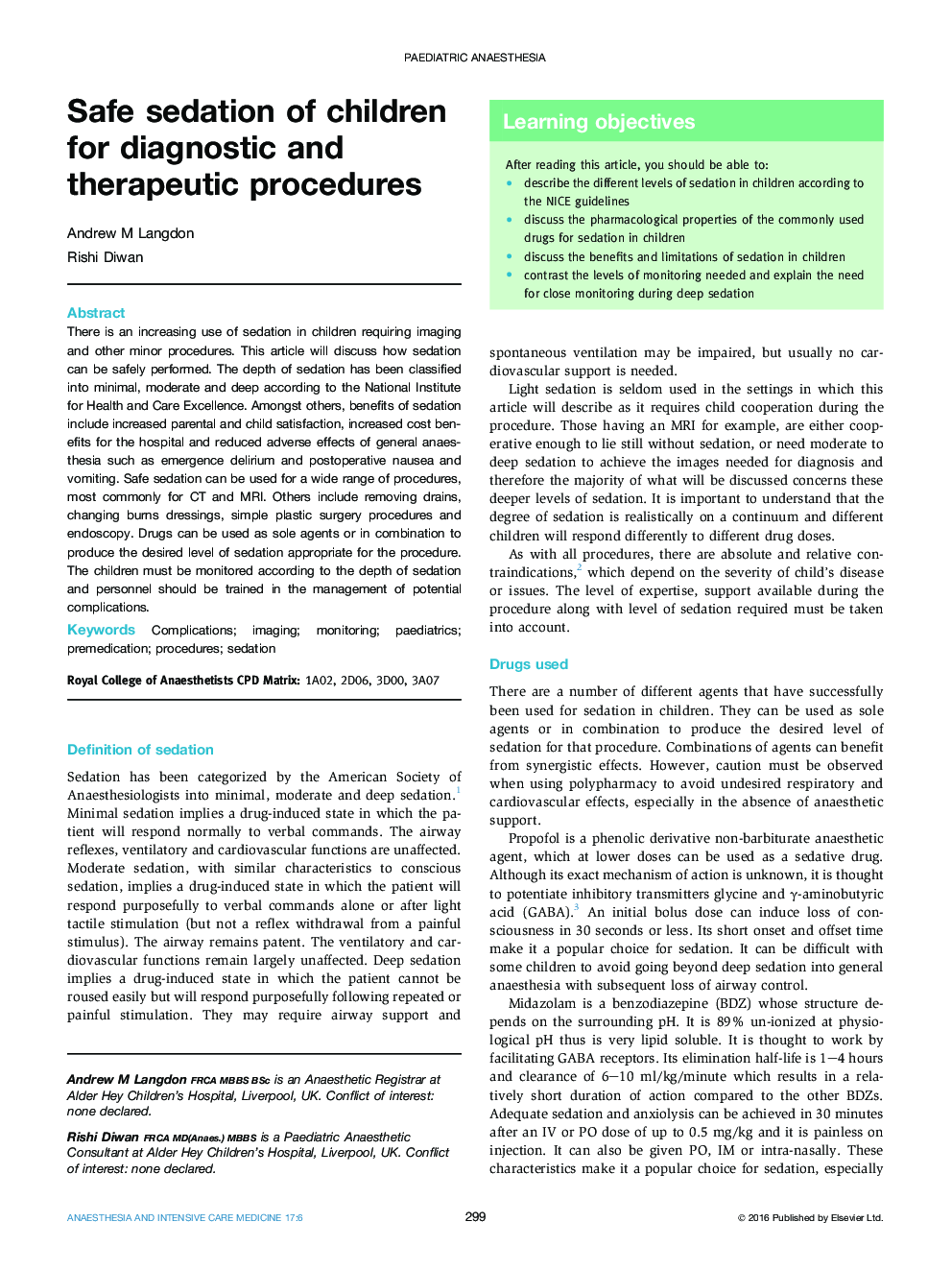| Article ID | Journal | Published Year | Pages | File Type |
|---|---|---|---|---|
| 2742168 | Anaesthesia & Intensive Care Medicine | 2016 | 4 Pages |
There is an increasing use of sedation in children requiring imaging and other minor procedures. This article will discuss how sedation can be safely performed. The depth of sedation has been classified into minimal, moderate and deep according to the National Institute for Health and Care Excellence. Amongst others, benefits of sedation include increased parental and child satisfaction, increased cost benefits for the hospital and reduced adverse effects of general anaesthesia such as emergence delirium and postoperative nausea and vomiting. Safe sedation can be used for a wide range of procedures, most commonly for CT and MRI. Others include removing drains, changing burns dressings, simple plastic surgery procedures and endoscopy. Drugs can be used as sole agents or in combination to produce the desired level of sedation appropriate for the procedure. The children must be monitored according to the depth of sedation and personnel should be trained in the management of potential complications.
